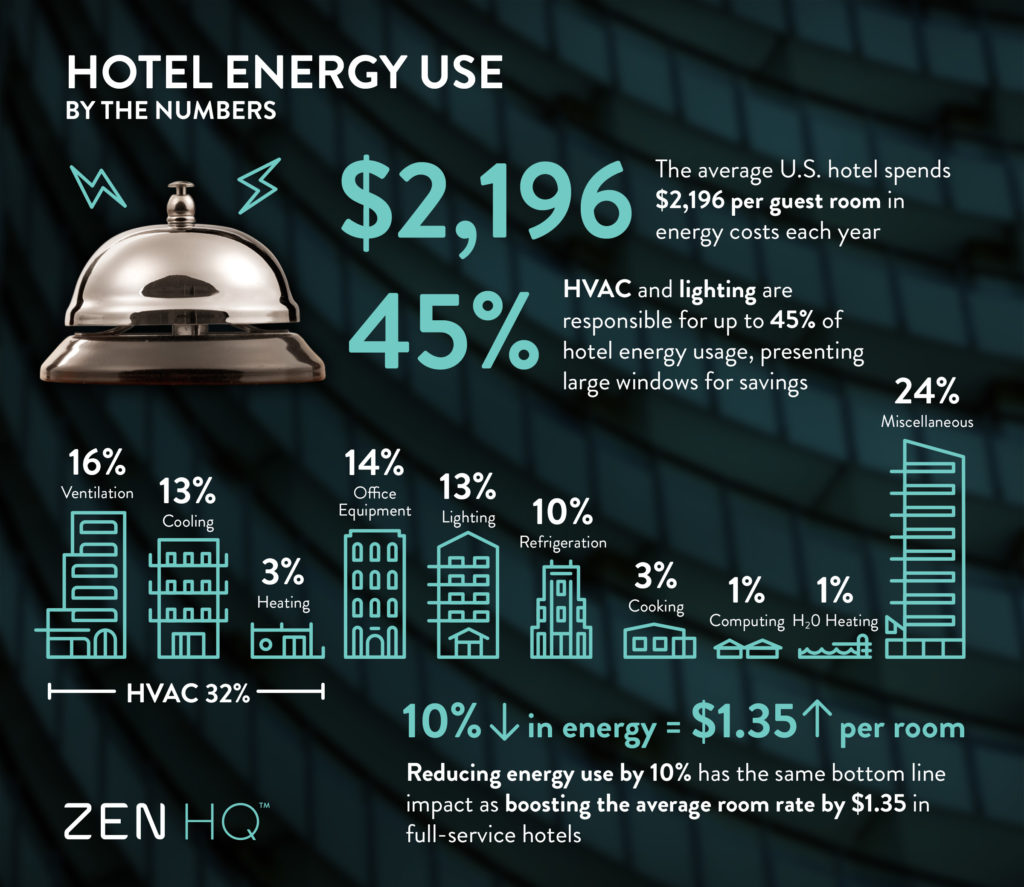Hoteliers all need their hotels to have enough energy to support guests’ many electronics as well as all hotel operations. As technology and energy consumption grows, it’s becoming more of a concern for hoteliers to make sure that their hotels are using energy cost-effectively. Energy is one of the fastest-growing costs hoteliers are faced with today, according to U.S. Environmental Protection Agency’s ENERGY STAR program. It’s important for hoteliers to keep their utility bills low while still providing guests with all the resources they need to have a wonderful stay.
Zen Ecosystems, a company that provides commercial buildings and homes with energy management solutions and products, recently created a series of infographics focused on providing information on energy usage to industries like hospitality.

“Our goal with this series is to highlight the unique energy use challenges for each sector and provide context for how facility stakeholders can better manage energy use,” Zen Ecosystems CEO James McPhail says. “The first step in that process is identifying the biggest energy drains that can be controlled.”
The infographic shows that U.S. hotels spend an average of $2,196 per room on energy costs each year. It also reveals where the bulk of that energy is going, breaking down the percentage of energy that fuels hotel operations like ventilation, lighting, cooling, and heating.
According to McPhail, their team gathered this data from third-party resources to create an infographic that would help hoteliers understand the average amounts of energy used, how much it costs, and where that energy is being used in the industry. This infographic incorporates data from Deloitte, the U.S. Energy Information Administration, and ENERGY STAR.
While there is no fixed-energy cost for maintaining hotels, hoteliers can control the amount of energy they want to use and where. This information along with other resources can help hoteliers find ways to potentially reduce energy costs in their properties. “There are abundant opportunities to reduce energy that benefit the bottom line,” McPhail says.
While the hospitality industry has seen stable energy costs recently, McPhail believes that things could change down the line. “While it is encouraging that retail energy costs have remained level, that can change at any point,” McPhail explains. “Implementing effective energy management solutions will consistently benefit a business by providing a buffer to fluctuating costs in the near- and long-term












At 24% of energy cost, ‘Miscellaneous’ seems to large to be labeled as such. It would be great to drill down on that category to see where there are some additional large opportunities.